What if Landlords Could Get Paid for Weeding? Your Ideas Wanted
. Posted in News - 0 Comments
By Eric Weld, MassLandlords, Inc.
Here in New England, we are lucky to live in a place of natural abundance and biodiversity that adds so much enjoyment from early spring through late fall. Blueberries, strawberries, mulberries, grapes, hickory nuts, beach plums and some pumpkins are just a few of the beloved edible plants native to New England. One of our most cherished products, maple syrup, is made from the sap of sugar maples, also a native New England species.

If you spot oriental bittersweet vine like this one wrapped around your trees, remove it down to the root asap before it strangles your native plants. Image: cc by-sa James H. Miller, USDA Forest Service, Bugwood.org Wikimedia commons
Unfortunately, the affluent New England biodiversity that supplies these and other plants that enrich our lives is increasingly threatened by invasive, non-native plants.
You may not be familiar with species like Japanese knotweed, giant hogweed, garlic mustard and multiflora rose. These are a fraction of the long list of invasive plants found across Massachusetts. Maybe you’ve heard of kudzu, the amazingly resilient vine that blankets the southeast, now making its way into New England, threatening to smother every native plant in its path.
There’s a good chance you are hosting one or more of these widespread invasive plants on your Massachusetts property, to no fault of your own. If you have these plants on your property, they are very likely causing harm in some way to other nearby plants, disrupting biodiversity, reducing pollination and disrupting the food chain. Worse, for some: invasive plants are slowly but surely strangling our natural resources economy. By doing so, they are costing you money and indirectly hindering your renters’ ability to pay rent.
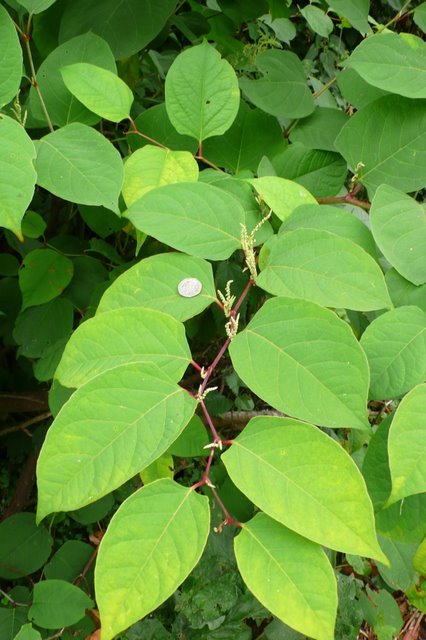
Japanese knotweed, shown here, is one of the most prevalent invasive plants in Massachusetts. In addition to overtaking and smothering surrounding plants, this bothersome weed can damage buildings and roads, clog waterways, block access and cause soil erosion. Image: cc by-sa Nigel Mykura Wikimedia commons
We will go into more detail below about why we should all be working together to eradicate invasive plant species. We are seeking your ideas for how landlords might go about reducing or eradicating invasive species from rental properties. If the 70,000 landlords across the state engaged in a collective effort, perhaps working with their tenants, to mitigate invasive plants, it could substantially move the needle on controlling harmful vegetation, supporting ecosystems, and saving money.
We wonder: If legislation were introduced providing tax credits for landlords who clear their properties of invasive plants (i.e., “paying” landlords for weeding), might that be adequate incentive to motivate us to act en masse?
If you have ideas or suggestions for effective projects, legislation or individual measures for ridding our properties of invasive plants, please let us know at hello@masslandlords.net.
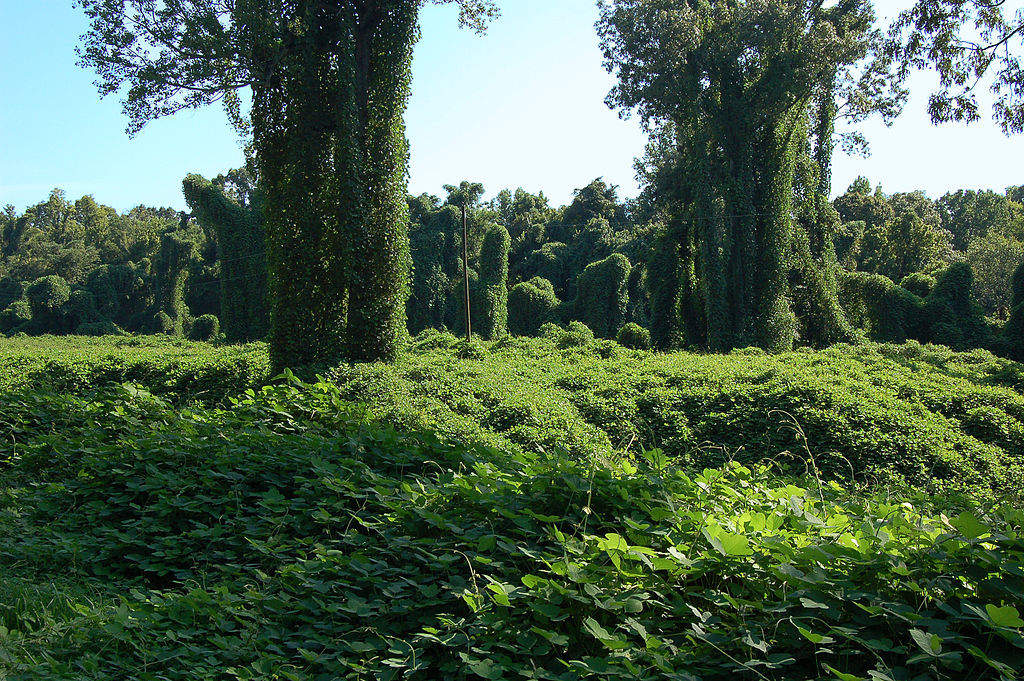
Kudzu, a vine native to Japan and China, is one of the most resilient invasive species in the U.S. This Mississippi field has been overrun with the vine, which is now making its way into New England. Image: cc by-sa GSmith Wikimedia commons
How Much Money?
Invasive plants cost us money in many ways. Just managing and mitigating their encroachment is a large annual expenditure. A study published in 2022 in the journal Science of the Total Environment determined the costs resulting from all invasive species (plants and animals) to be $21 billion per year between 2010 and 2020 for the United States alone. That cost has steadily increased for decades and is expected to continue rising. Six decades ago, the cost was $2 billion per year. Most of these costs are for resource damages and loss, the report says.
There are hundreds of government agencies, nonprofits and horticultural groups dedicated to managing invasives species and educating people on their harms. But it will take collective action and cooperation from property owners to eradicate invasive plants and contain or eliminate their enormous costs to our economy and environment. The longer we wait to get a handle on invasives, the higher the cost will be.
Indirect costs are also expensive. The removal of and damage done by invasive species drives up the cost of many foods we enjoy. When invasive weeds like garlic mustard and buckthorn move into corn fields, they can shade and crowd out the crops. Norway maple trees are a common invasive in Massachusetts that can out-compete important native plants such as apple trees. Squash, cranberries, dairy products and many other agricultural goods are affected by invasions of harmful non-native plants, resulting in higher prices.
Damage control is another high cost of invasive plants. When invasives like honeysuckle, buckthorn and bittersweet take hold and grow out of control, they frequently clog waterways and water treatment facilities, cause threats to local fisheries and destroy farm crops to the tune of billions of dollars in damages. When invasive aquatic species take root in ponds, lakes and other individually owned water bodies, they can greatly reduce property values by raising maintenance and utility costs and reducing recreational use.
By pulling a few weeds, we landlords could make an enormous impact on our economy and environment. The eradication of invasive species would free up billions of dollars that could be used for building more housing, assisting more families, and fighting climate change. With resultant lower food prices, our tenants could more easily and regularly pay rent.
It's not just about economy, either. Invasives can also impose a drastic human toll. The wildfires that killed more than 100 people and destroyed much of the Hawaiian island of Maui in 2023 were largely fueled by invasive, non-native grasses combined with hotter weather ushered by climate change.
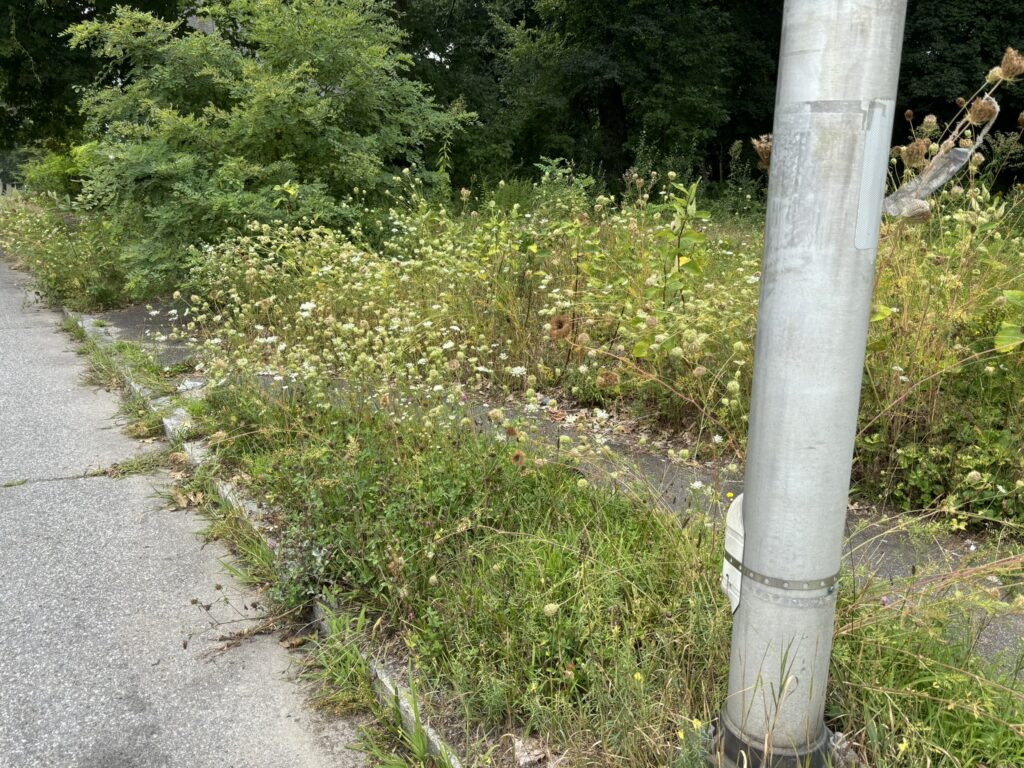
This yard and sidewalk are overgrown with "Queen Anne's Lace", also known as Daucus carota or "wild carrot." Other plants appear in the unmanaged mix. Image: cc by-sa masslandlords, inc.
Human Spread of Invasive Plant Species
Invasive plants are a problem nearly everywhere, and have been for a long time. Since the time humans began moving from place to place, plants (and animals) moved with them. When these species are introduced to a new environment, some of them thrive, nudging aside and crowding out species that have always been there, potentially leading to extinction of native species and causing great harm to local ecology.
Humans are the biggest source of invasive species because we roam the planet far and wide. Invasives are moved in ship ballast water, for example, and in crates, palettes and luggage. Seeds can stick to clothing, tires, firewood and other items that are moved from place to place, then take up residence when they get there.
Sometimes, invasive species have been intentionally introduced for specific reasons, only to have unintended negative consequences. Think of the amazingly resilient vine kudzu. Kudzu is a vine native to Japan and China. It first appeared in the U.S. in the late 19th century, introduced at the Philadelphia Centennial Exposition in 1876. Kudzu was prized for its sweet smell, and pushed throughout the American Southeast in the mid-20th century for its sturdy root structure, as a way to manage soil erosion. The vine has since grown out of control, smothering countless plants in its wake, and now is creeping into the Northeast, Midwest and even west coast states.
Animals, wind and water may also transport invasive species from place to place, but not nearly on the scale that humans do.
Also, invasive animals pose huge problems to our environment and ecology. Consider the gypsy moth (a former name for what is now called the spongy moth), a longstanding threat to trees in your back yard. Managing these voracious moths, which were first mistakenly released from an artist/astronomer’s Boston apartment in the 1860s, cost the U.S. an average of $30 million per year between 1980 and 1994. In New England, we have also struggled with zebra mussels, a highly invasive freshwater species, originally from southeastern Europe, that can smother native mussels and game fish in inland water bodies. These mussels can also cluster and clog water pipes, causing extensive and expensive damage.
We’re not alone in the Northeast in dealing with invasive animals. Think about Burmese pythons attacking and eating native mammals in the Florida Everglades, or Asian carp thriving in the Mississippi River. Invasive plants and animals are a worldwide problem.
For this article, for now, we focus on removing invasive plant species because, as property and landowners, we are better situated to reduce their impact than invasive animal species.
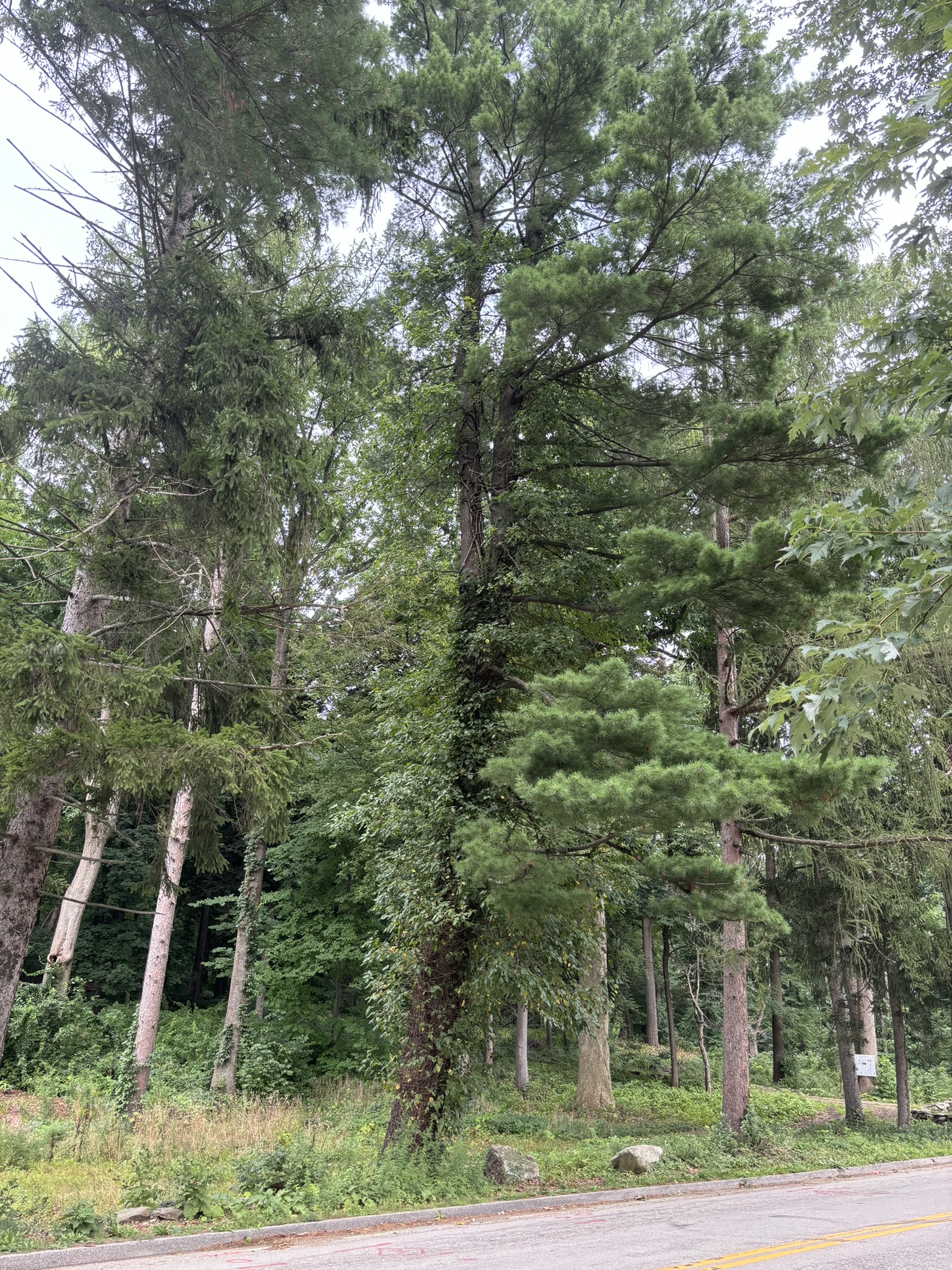
This native white pine will not survive the bittersweet climbing up it. White pine were once so numerous and prized, the King of England sent couriers throughout all New England laying claim to pines suitable for ship masts and other first-rate lumber. Image: cc by-sa MassLandlords, Inc.
Collective Action
Invasive species have become such a recognized problem worldwide that nearly every country signed a United Nations agreement in 2022 to protect lands and seas and take measures against biodiversity loss. (The United States was not among the 190 nations that signed the agreement, which was supported by President Biden but opposed by many members of Congress.)
In Massachusetts, several groups are dedicated to managing invasive species. The Massachusetts Department of Agricultural Resources (MDAR) maintains the state’s prohibited plant list and executes numerous measures to control and eradicate invasive species.
The Native Plant Trust is a plant conservation nonprofit based in Wayland, Mass., that focuses its resources on preserving native New England plants and educating gardeners on cultivating native plants.
A bill (S.508, H.890) was proposed in the state legislature’s 193rd session, titled “An Act Responding to the Threat of Invasive Species.” The bill proposed to establish an Invasive Plant Trust Fund that would support administration and personnel for the purpose of studying and devising strategies for eradicating invasive species in the state. Similar bills were proposed in the 191st and 192nd legislatures with no further action beyond the Environmental and Natural Resources Committee.
According to Jennifer Forman-Orth, an environmental biologist with the MDAR, these collective efforts are making some inroads in Massachusetts. One important area of concentration for her department is working with retail nurseries to stop selling invasive plants and favor natives. All sellers of woody plants in Massachusetts are required to register with the MDAR, to comply with the Prohibited Plant List, cooperate with inspections and ensure that their plants are raised pest- and pathogen-free.
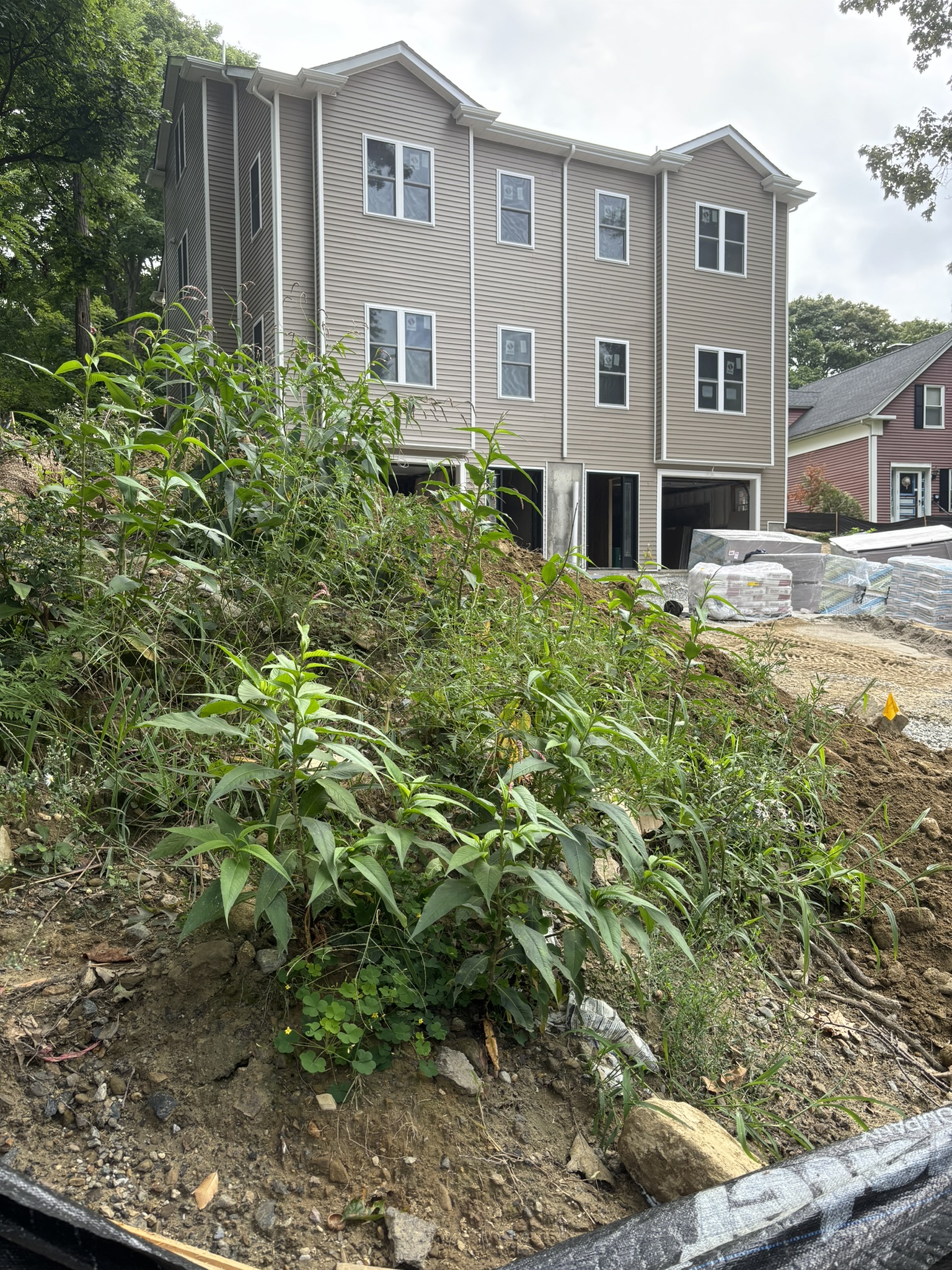
Disturbed habitat, like this construction site, is a primary germination ground for invasive seeds. The tall plants growing on this removed fill are invasive "lady's thumb," or Persicaria maculosa. They are taller and thicker here than on any sidewalk. Image: cc by-sa MassLandlords, Inc.
Why Are Invasive Plants so Bad?
There are several reasons why invasive plant species pose such massive problems for all of us and why we need to take actions to control and eradicate them.
Very directly, some invasive plant species carry diseases or viruses that can harm or kill surrounding plants, and even harm humans. The multiflora rose, for example, widespread in Massachusetts, can be harmful if ingested by children – not to mention, its strong, sharp thorns can pierce human and animal skin.
Less directly but more ominous, when invasive plants are introduced into a non-native environment, they often have no natural predators. No insects, birds or mammals eat or use them. As a result, invasive species are often able to out-compete surrounding plants that do provide food or materials for animals. The invasives then grow and spread faster, consuming more space and absorbing more sun, water and soil nutrients, muscling out native species.
Also, some invasive, non-native plants may distract pollinators, depriving native plants of essential pollination, and robbing the native plants’ ability to reproduce and compete. (Read more on plant pollination below.)
Some invasive species may also bring with them diseases or pests that are harmful to surrounding vegetation, which may have no immunity or natural defense, further threatening their survival.
Many of the downstream problems with invasive plant species stem from this circumstance of their relative success against native plant species, which are ill-prepared to combat their intrusion.
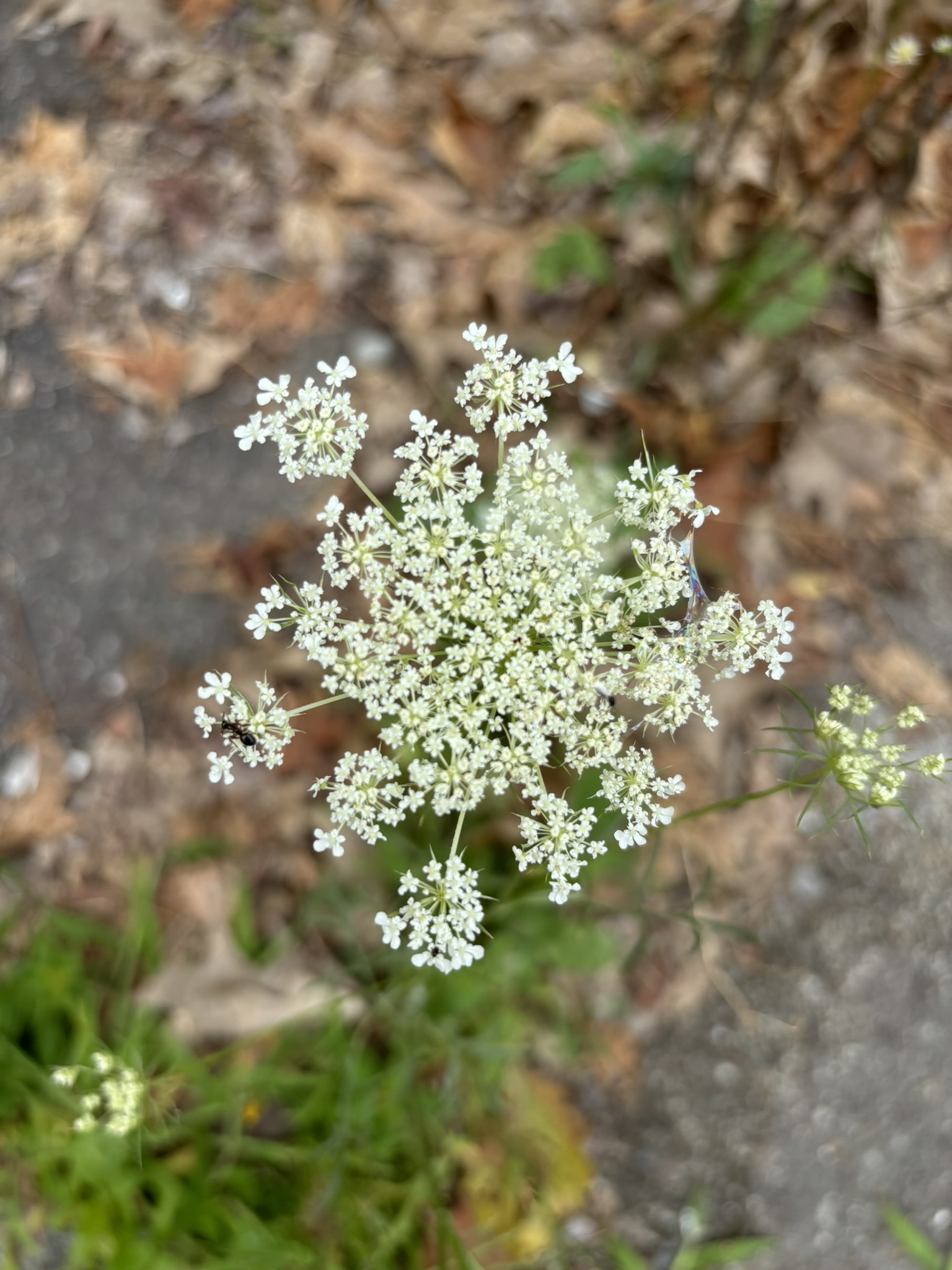
Two pollinators sit atop a wild carrot flower. These bugs should be on a native flower instead. Image: cc by-sa MassLandlords, Inc.
Disrupting the Food Chain
Sitting atop the world’s food chain, as we humans do, makes us extremely vulnerable to – and responsible for – its healthy flow. Our dominant role in spreading and allowing invasive species to take hold and thrive has vastly disrupted the healthy balance of food and ecosystems for us and all other species on the planet. Among all threatened or endangered species on earth, 42% are the result of invasive species, according to the National Wildlife Federation.
When an invasive species enters a non-native area and thrives, due either to its lack of predators or natural ability to consume resources, it reduces the natural biodiversity of that area. Part of that biodiversity includes food sources for animals, including insects, in the area. As a result, surrounding animal and insect populations that rely on those plants begin to wane. Further up the chain, slightly larger herbivores and omnivores are deprived of their food sources, depleting their populations. And so on. Eventually, the lack of food sources disrupts animal and plant food supplies consumed by humans.
Further, large-scale intrusions of invasive plants can affect the habitats of pollinators like bees, birds and butterflies. The overall impact of invasive plants on pollinators is still being researched and determined. But scientists at the University of Reading, U.K., analyzed years of data comparing yields of food crops assisted by insect pollination with crops not pollinated by insects. They found 32% less variability and an increase in crop yields pollinated by bees and other insects, leading to more crop stability, especially among fruits and vegetables. More stable and dependable crop yields translate to steadier food prices and reduce the likelihood of price spikes.
Steadier food prices means more affordability, especially for low-income consumers. Better food affordability would also ease your renters’ ability to pay rent each month.
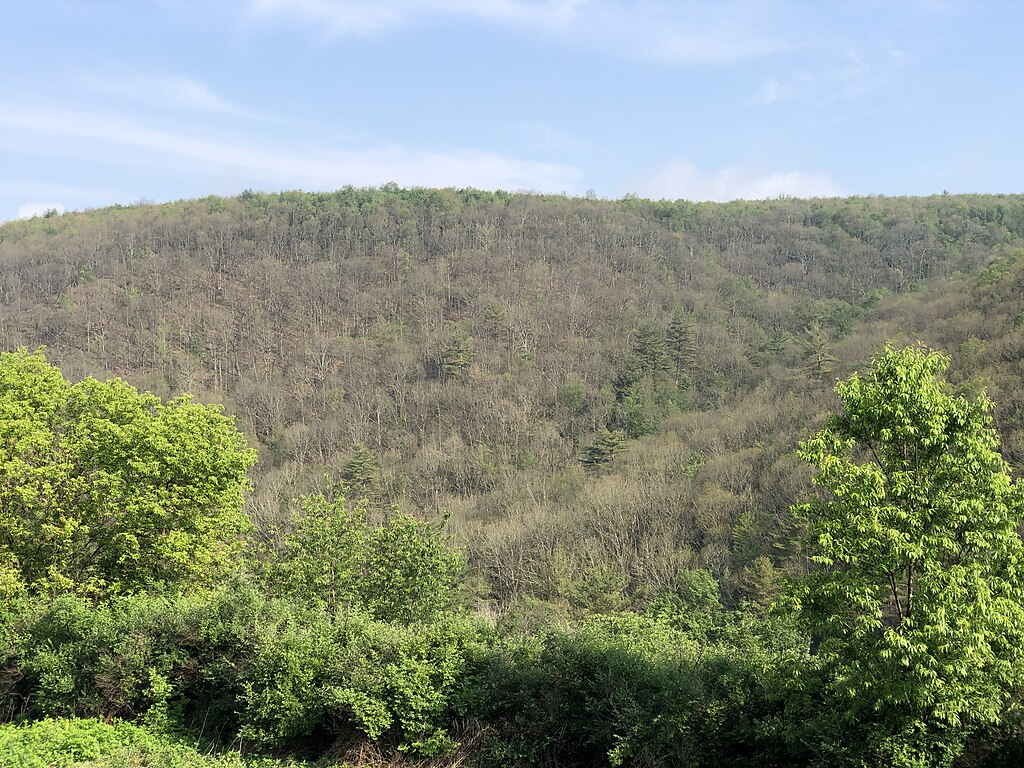
Invasive animals are also a problem worldwide. This extensively defoliated hillside in Clinton County, Pa., is an example of the destruction that gypsy moths (also known as spongy moths), very common in Massachusetts, can do. Image: cc by-sa famartin Wikimedia commons
Warmer Temps = More Invasives
The encroachment of invasive species is exacerbated by climate change. Our warmer New England winters in recent years have failed to kill off the seeds of some invasives as would have happened in past colder winters. The invading species then germinate throughout the year and creep further north. (Warmer winters also assist the northern migration of countless invasive animals and insects, such as mosquitoes, Japanese beetles and zebra mussels.)
Warmer global temperatures also accommodate previously inaccessible shipping lanes. Global shipping has always assisted migration of invasive species when they are inadvertently transported in ballast water, containers and ship hulls.
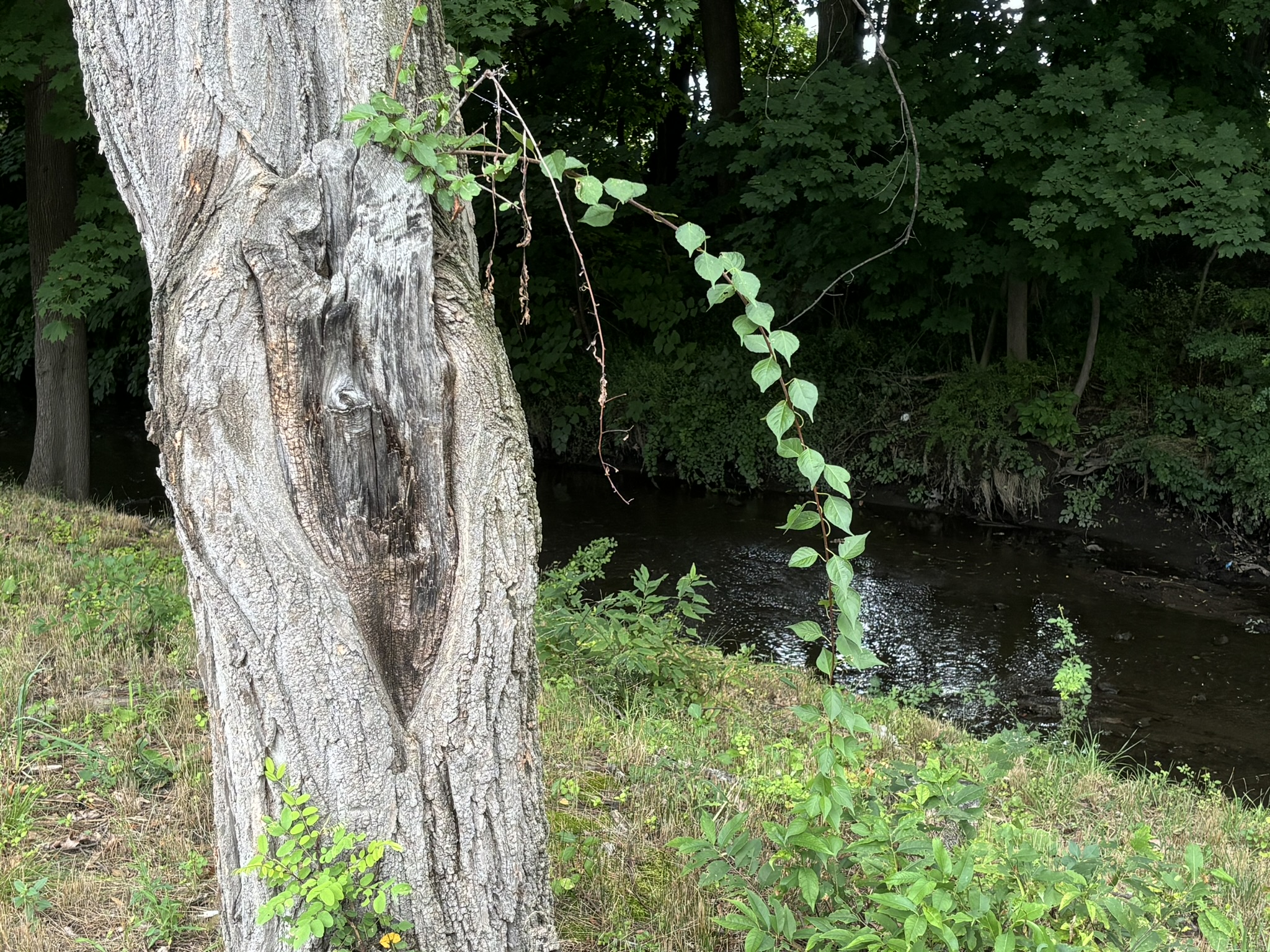
Within a month of the Beaver Brook bittersweet purge, new vines shoot up from their roots and resume the attack. Image: cc by-sa MassLandlords, Inc.
How Can Landlords Help?
As property and landowners, landlords across the state are positioned to make a meaningful impact on invasive plant species mitigation by ridding our respective properties of the harmful vegetation. How to do so is the question.
It may not be possible to eradicate 100% of invasive plants from your properties. Forman-Orth of the MDAR acknowledges that. But she emphasizes that if rental property owners across the state were to engage in a mass effort to begin removing the most prevalent invasive plants, it would make a substantial impact, help the environment, facilitate the food chain and save lots of money. That’s why this article lists some of the most common and problematic invasive species found on Massachusetts properties. Removing those plants from your properties would be a strong start.
To be clear, we are not advocating for the sacrifice of green space in our call to eradicate invasive species. Yards, parks and swaths of natural greenery are an important component for human and animal health. But healthy, diverse yards and beautiful, colorful gardens can be achieved with native plants that complement ecosystem balance without inviting invasive species and their numerous harms.
What might a collective landlord campaign to remove invasive plants look like? Could we partner with our tenants, or deputize them to remove invasives from the yards of their rentals? Would legislation offering tax credits for property owners that achieve invasive plant-free yards successfully encourage enough of us to take action?
We want to hear your ideas. Please write to us at hello@masslandlords.net to let us know your thoughts on how we can bolster the state’s efforts to greatly reduce invasive plants and their harmful impacts.




